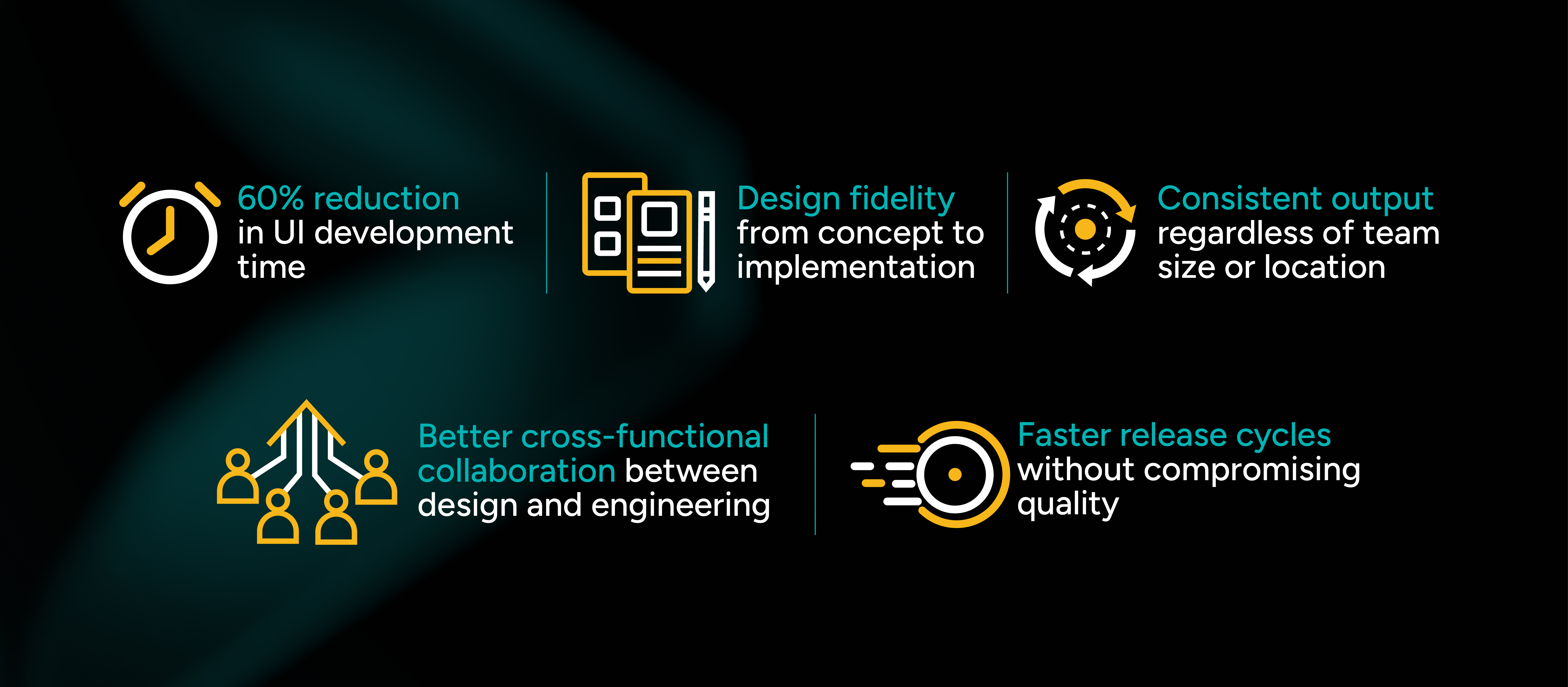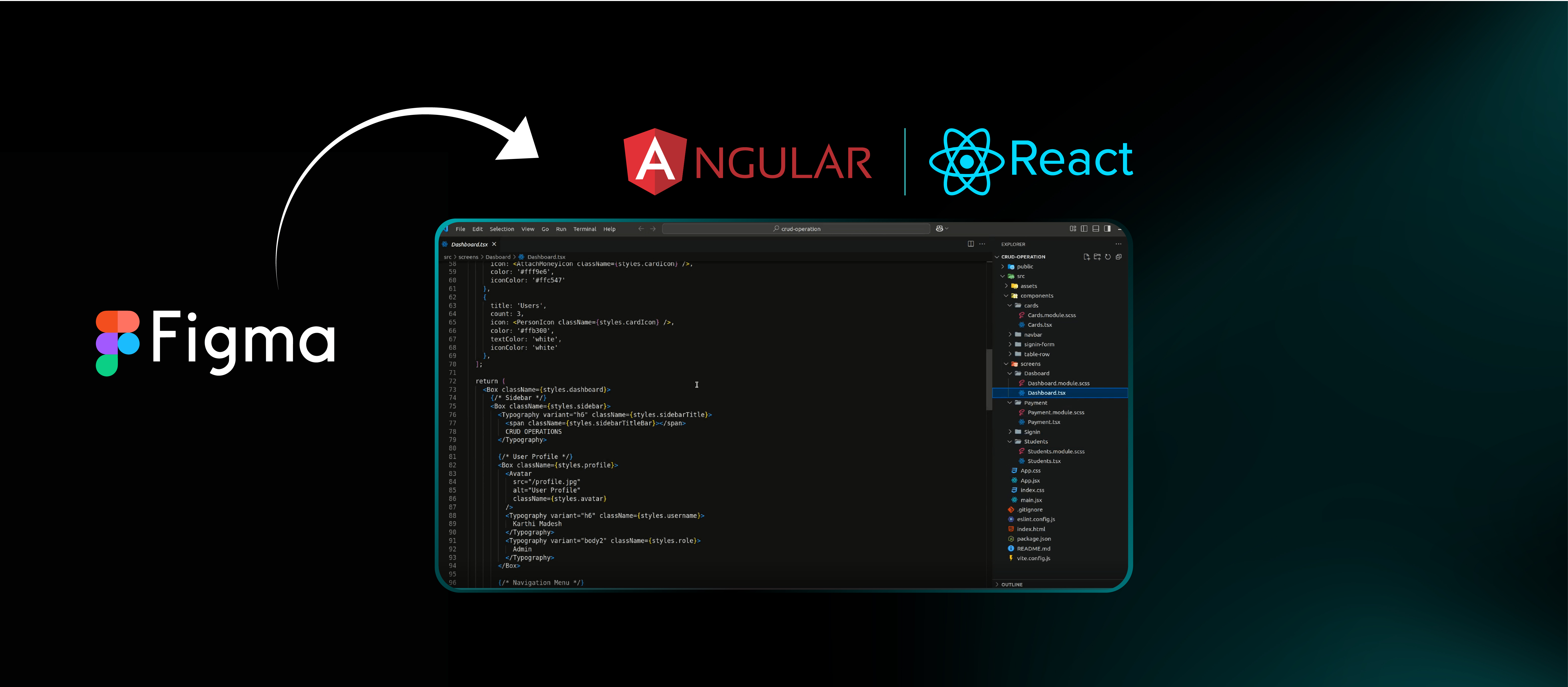October 29, 2025
TL;DR
Manually converting Figma designs to React code slows down enterprise delivery cycles. Codespell.ai changes the game by generating production ready, scalable React code directly from Figma. It integrates with your design system, supports team-wide consistency, and saves up to 60% of front-end development time—making it ideal for large-scale UI delivery.
The Problem: Figma Handoff is Slowing Down Engineering
You’ve finalized the design. Figma files are polished and approved.
Now your front-end team starts building—but not from a blank slate. They’re trying to translate UI into functional React code while navigating inconsistencies, design gaps, and hours of boilerplate.
And if you’re running an enterprise product, this isn’t a one-off pain. It happens across teams, sprints, across every new feature.
Typical problems we hear from engineering leads:
- “Every handoff feels like starting from scratch.”
- We’re wasting developer time on layouts and scaffolding.”
- “The end product rarely matches the design pixel-for-pixel.”
- “Our design-to-code process doesn’t scale.”
The Codespell Approach: Figma to React Code-at Enterprise Scale
Codespell.ai automates the conversion of Figma designs into clean, production-grade React components—without breaking your workflow.
Let’s break down what makes it different:
Production-Ready Code Output
This isn’t code you’ll throw away. Codespell generates real React code—modular, responsive, and aligned with your standards. It’s designed to be shipped, not demoed.
Built for Large Teams and Design Systems
Codespell maps Figma components to your enterprise design system, ensuring consistent UI structure across every project and team. No more one-off implementations.
Seamless Developer Handoff
Your developers don’t need to rewrite or debug auto-generated code. They get structured, editable components ready for business logic. Think of it as a trusted co-pilot for your UI layer.
Open, Editable, and Scalable
Unlike black-box tools, Codespell gives you full control. The generated code is open, customizable, and integrates into your existing front-end stack.
Why It Matters for Enterprises
Your engineering org isn’t building toy apps. You deliver mission-critical software across regions, platforms, and business units.
With Codespell, you get:
- 60% reduction in UI development time
- Faster release cycles without compromising quality
- Design fidelity from concept to implementation
- Better cross-functional collaboration between design and engineering
- Consistent output regardless of team size or location

When Should You Use Codespell?
Codespell is built for real-world enterprise applications-not just MVPs or static websites.
Use it when you need to:
- Convert complex Figma designs into React components
- Accelerate time-to-market for new features
- Standardize UI code across teams and products
- Align development workflows with your design system
- Free up developers from repetitive frontend tasks
Getting Started with Codespell’s Figma Plugin
Ready to turn your Figma designs into production-grade React code? Here’s how:
- Open the Codespell plugin inside Figma
Sign in securely using your Codespell workspace credentials. - Select your tech stack
Choose framework (React, Angular, etc.), language (JS/TS), and styling method (e.g., Tailwind, MUI). - Pick components or screens
Select the exact UI elements you want to convert—pages or atomic components. - Review settings & generate code
Codespell auto-maps layouts, variants, and structure. Hit "Generate" to export a clean, ready-to-integrate codebase. - Plug into your IDE
Unzip the files, connect to your repo, and start building with confidence.

For a detailed walkthrough, explore our Figma-to-Code blog guide.
Final Word: It’s Time to Automate the Last Mile of Design-to-Code
Figma files shouldn't sit in limbo, waiting for manual translation.
With Codespell.ai, you empower your front-end teams to start building-not converting. You standardize output, accelerate delivery, and free your developers to focus on what truly moves the business forward.
→ Want to see Codespell in action?
Book a personalized walkthrough and bring velocity to your front-end team.


.png)






.png)
.png)